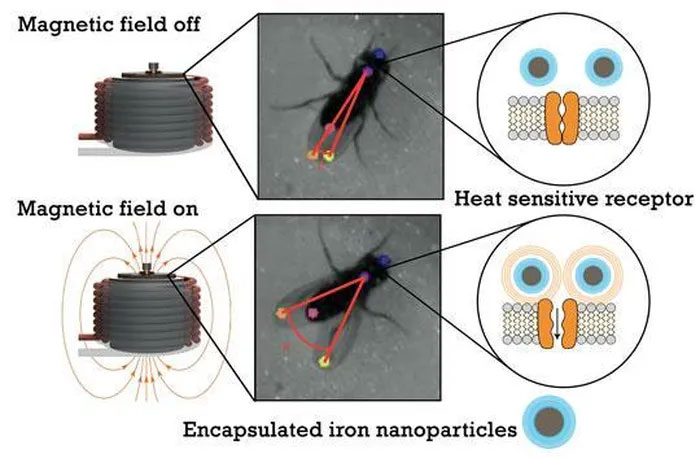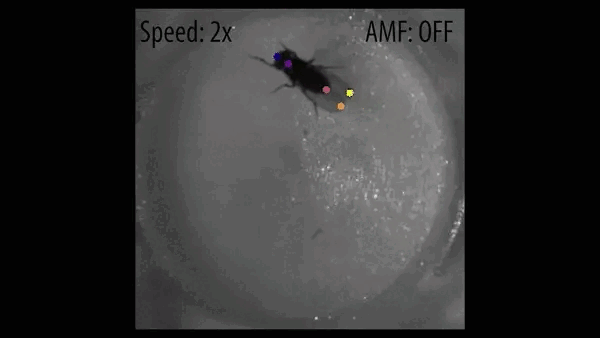A new study has created fruit flies that can essentially be controlled remotely.
Researchers at Rice University (Texas, USA) have demonstrated a way to “hack the brains” of fruit flies to control them from a distance. The flies will perform a specific action within one second after a command is sent to certain neurons in their brains.
The research team began with genetic engineering to create flies that have a specific heat-sensitive ion channel in some of their neurons. When this channel detects heat, it activates the neuron. In this case, that neuron causes the fly to spread its wings, a gesture they typically use during mating.
The thermal activation is achieved through iron oxide nanoparticles injected into the insects’ brains. When a magnetic field is turned on nearby, these particles heat up, causing the neurons to emit heat, prompting the fly to adopt a wing-spreading posture.
To test the system, the researchers kept these special flies in a small enclosure atop a magnetic coil and observed them using an overhead camera. When the magnetic field was activated, the flies would spread their wings within half a second.

Diagram illustrating how the system works.
“To study the brain or treat neurological disorders, the scientific community is seeking tools that are both extremely precise and minimally invasive,” said Jacob Robinson, one of the study’s authors. “Remotely controlling selective neural circuits using a magnetic field is somewhat of a ‘holy grail’ for neurotechnology. Our work represents an important step towards that goal as it increases the speed of remote control, bringing it closer to the natural speed of the brain.”
The direct goal of the team is to use this technology to restore some vision for patients with visual impairments by stimulating the visual cortex. Similar techniques have been used to control the movements of mice, which could lead to better treatments for motor issues rooted in the brain.

DARPA, the agency sponsoring this project, even has other plans. For example, they aim to develop a headset that can read the neural activities in a person’s brain and then record it into another brain, essentially transferring thoughts or perceptions between individuals.
The research was published in the journal Nature Materials.




















































